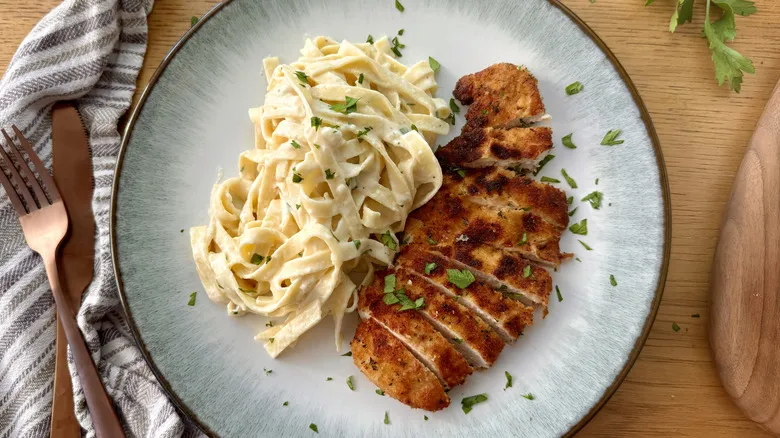Gather the ingredients for ultra creamy chicken fettuccine Alfredo
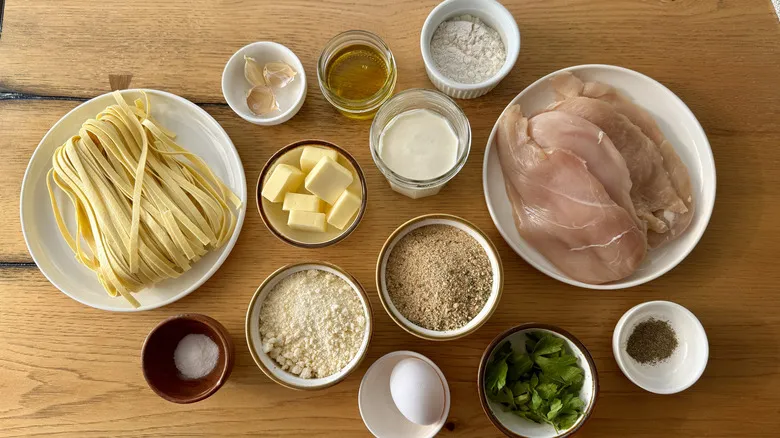
Begin this recipe by making the breaded chicken. For this, gather two chicken breasts (sliced in half lengthwise), kosher salt, black pepper, an egg, all-purpose flour, seasoned panko breadcrumbs, and olive oil. For the fettuccine Alfredo, you will require additional salt, fettuccine pasta, butter, heavy cream, grated Parmesan cheese, black pepper, and freshly chopped parsley. If desired, you can include garlic in the Alfredo sauce, and it’s a good idea to have some extra Parmesan ready to sprinkle on the finished dish.
Step 1: Prep a baking sheet

Prepare a rimmed baking sheet by lining it with parchment paper, then place a wire rack on top. Set it aside.
Step 2: Season the chicken
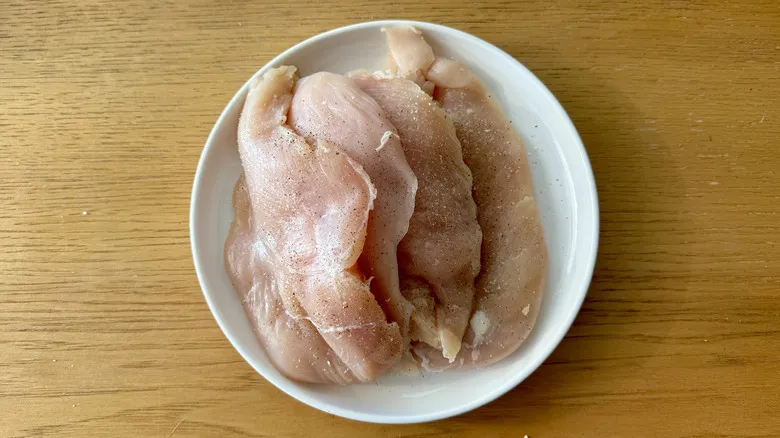
Sprinkle salt and pepper on both sides of the chicken to season it.
Step 3: Whisk an egg

Beat the egg in a shallow bowl with a bit of water.
Step 4: Prep the breading stations
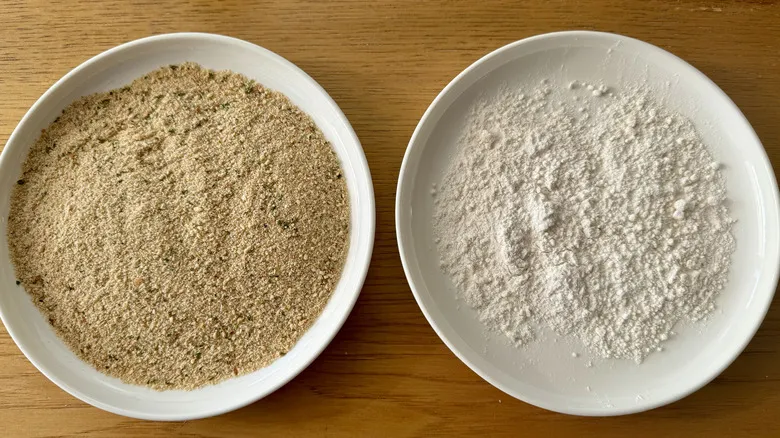
Place the flour and panko into two distinct shallow bowls or plates.
Step 5: Dredge the chicken
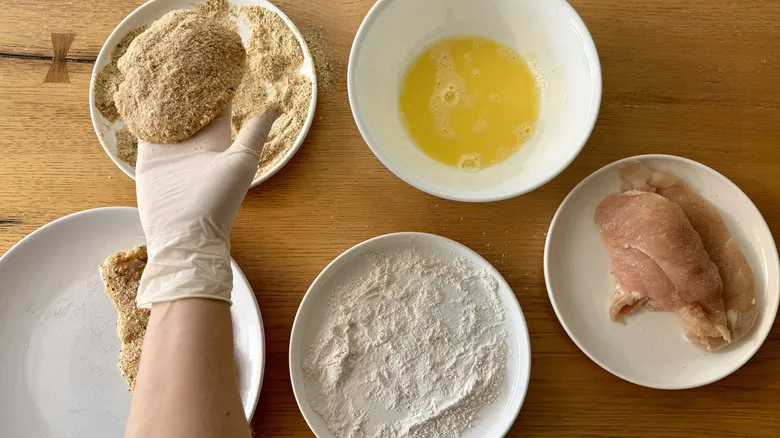
Take one piece of chicken at a time and coat it in flour, shaking off any excess. Next, dip it in the egg mixture, and finally, roll it in the panko breadcrumbs.
Step 6: Place the chicken on plate
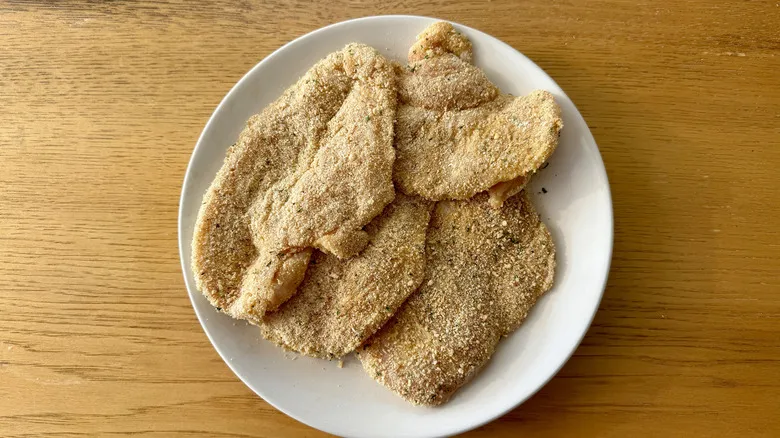
Move the coated chicken breasts onto a plate.
Step 7: Heat the oil
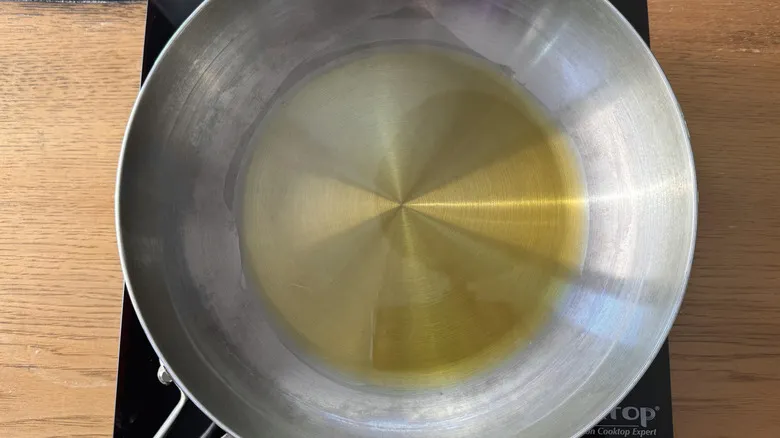
Warm 2 tablespoons of olive oil in a large frying pan over medium heat.
Step 8: Cook the chicken on one side
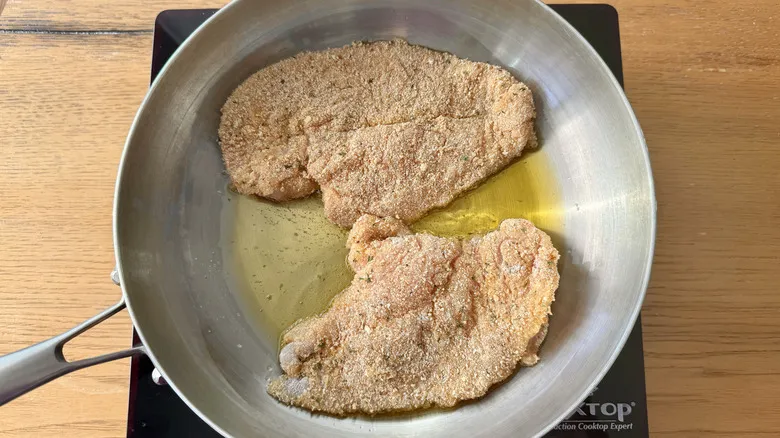
Place two chicken breasts in the pan and cook until the first side is golden brown.
Step 9: Flip the chicken
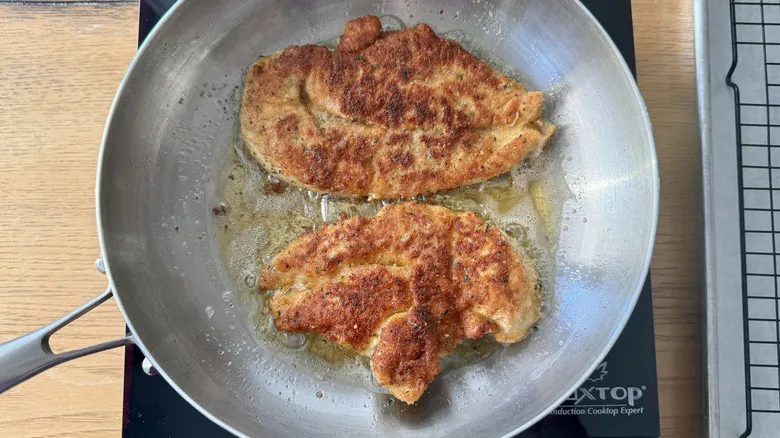
Turn the chicken and continue cooking until its internal temperature reaches 165°F.
Step 10: Transfer to a rack or warm oven
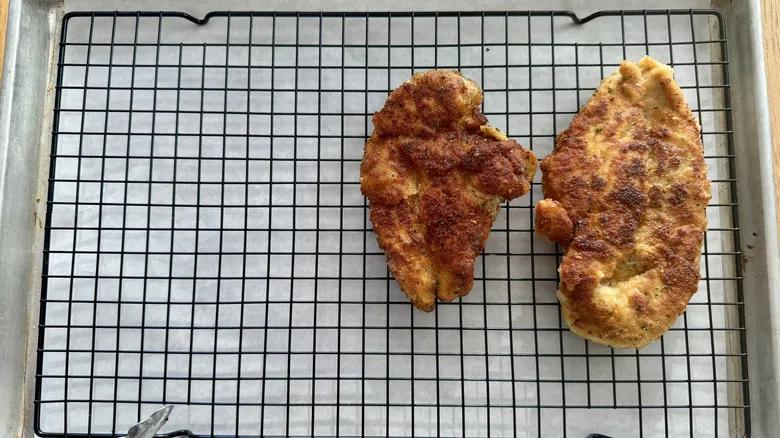
Place the chicken on the prepared rack and continue with the rest of the chicken. Optional: To keep the chicken warm, store it in a preheated oven at 200°F until it's time to serve.
Step 11: Boil salted water for pasta
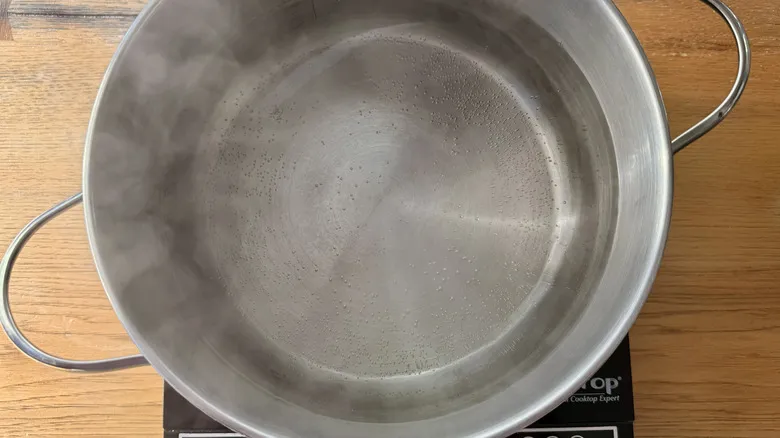
Fill a large pot with a minimum of 3 inches of water and add 2 teaspoons of salt for seasoning. Bring it to a boil.
Step 12: Begin the Alfredo sauce
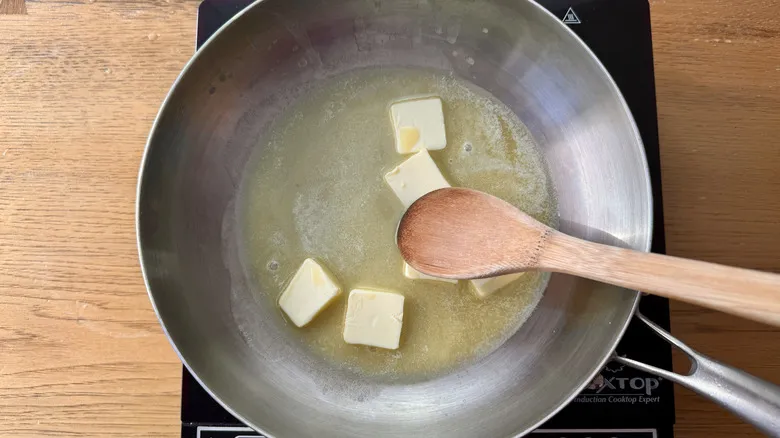
Meanwhile, melt the butter in a large frying pan over medium-low heat.
Step 13: Saute optional garlic
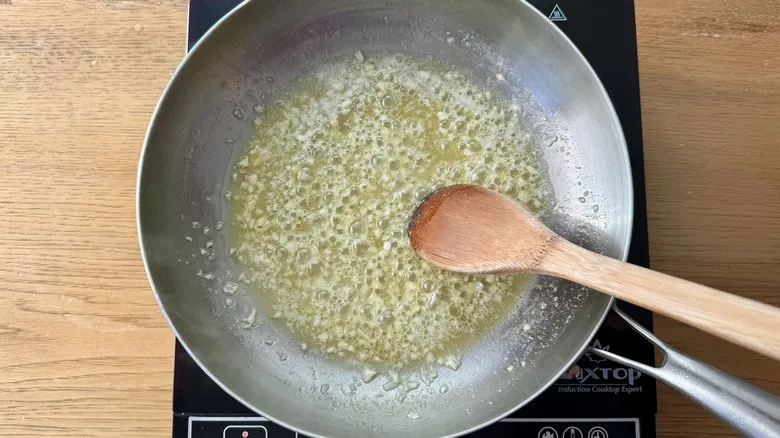
Incorporate the garlic, if desired, and sauté while stirring until fragrant.
Step 14: Stir in cream
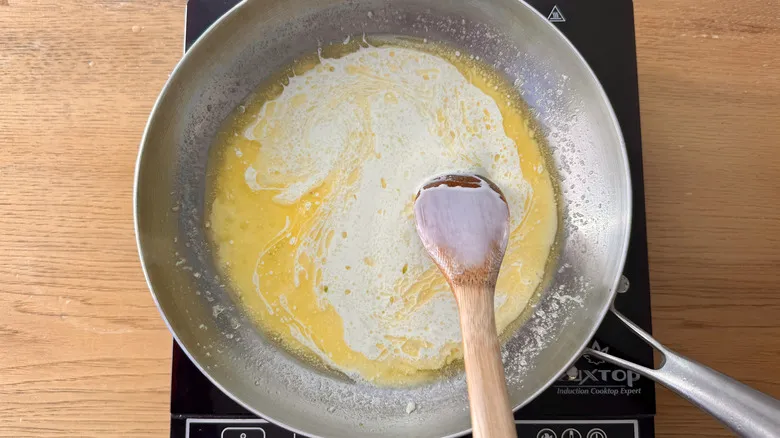
Incorporate the cream and cook while stirring until it begins to thicken slightly.
Step 15: Stir in cheese
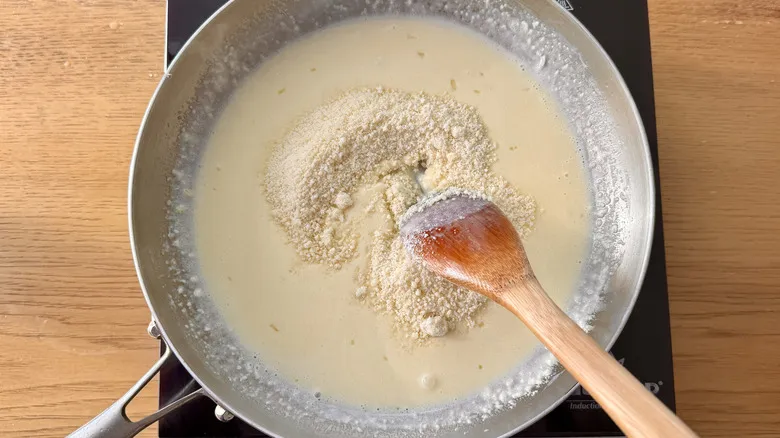
Take off the heat and mix in half of the Parmesan cheese.
Step 16: Cook the pasta
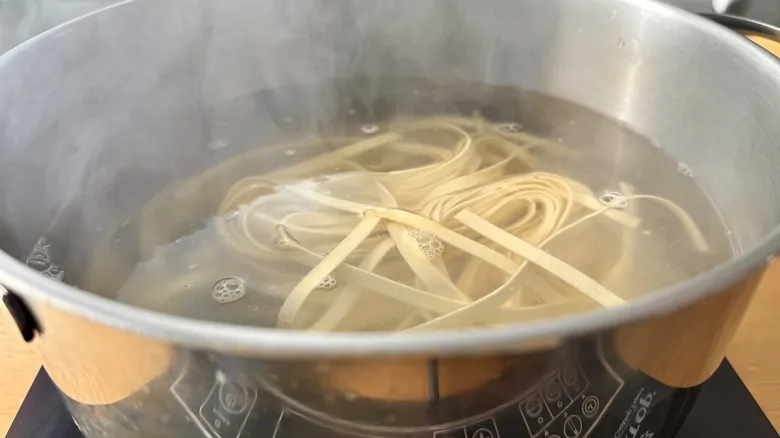
Prepare the pasta in boiling water according to the package instructions until it reaches an al dente texture.
Step 17: Add the pasta to the sauce
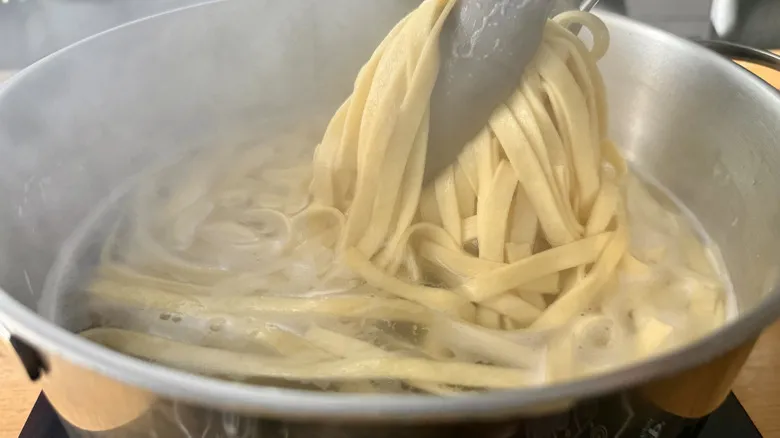
Utilize tongs to move the pasta to the skillet.
Step 18: Toss the pasta in sauce
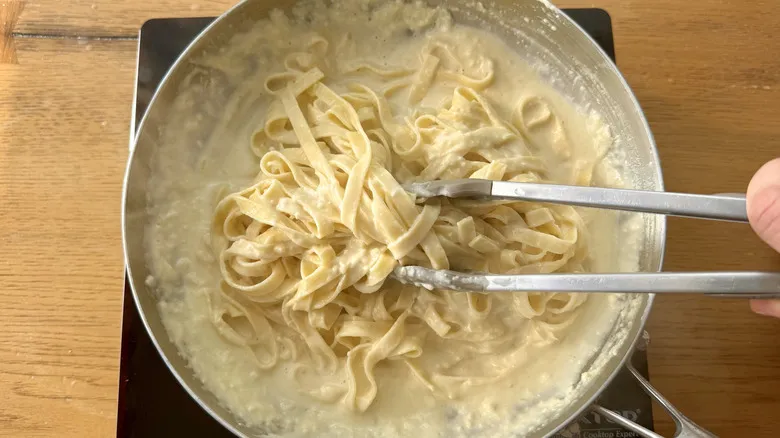
Mix the pasta with the sauce, black pepper, and the leftover Parmesan cheese to ensure it's well coated.
Step 19: Add pasta water to sauce (if needed)
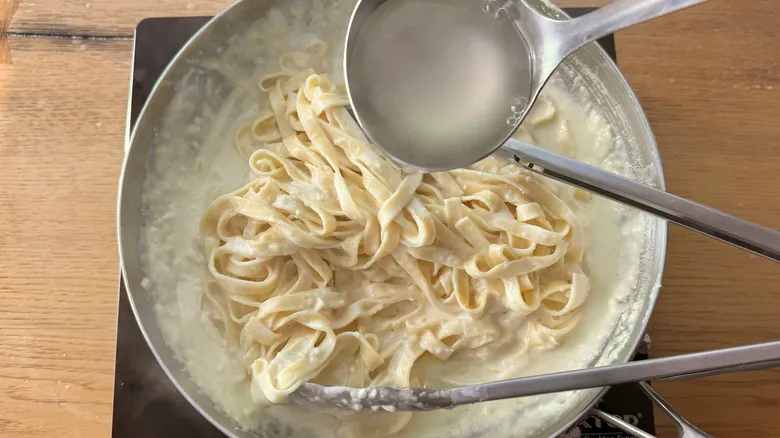
Add pasta water as necessary to achieve a creamy consistency in the sauce.
Step 20: Transfer the pasta to a plate
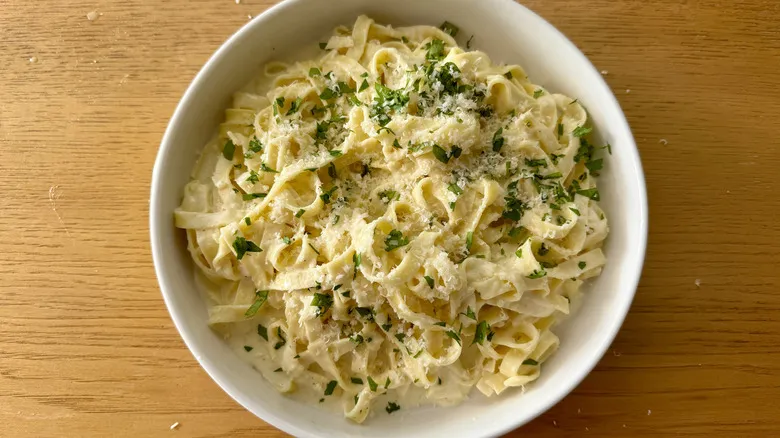
Move to a serving dish and top with fresh parsley and extra grated Parmesan if you like.
Step 21: Serve with chicken
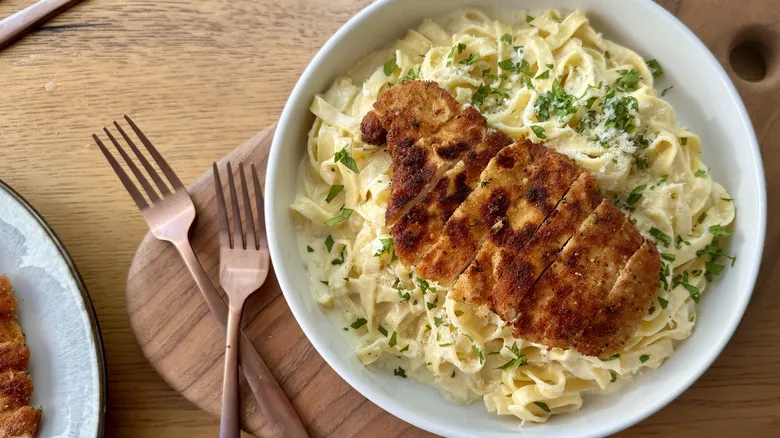
Plate the pasta alongside the chicken.
How is traditional fettuccine Alfredo prepared?

If you've had the delight of savoring fettuccine Alfredo in Italy—perhaps even at Alfredo alla Scrofa, the birthplace of this iconic dish—you may notice that this recipe deviates from the classic preparation of the beloved pasta. "Authentic fettuccine Alfredo is crafted with a simple emulsion of butter, Parmesan, and pasta water, resulting in a rich, silky sauce," explains Rosenhouse. So, if you were to dine at an Italian restaurant, there's a strong possibility that this is the style of Alfredo you would be served (and if you're fortunate, it might even be tossed right at your table atop a massive wheel of Parmesan cheese).
American versions of fettuccine Alfredo differ somewhat from the traditional recipe, yet they remain just as delicious—arguably even creamier due to the inclusion of heavy cream. "This cream-based variation incorporates heavy cream for added richness and a velvety texture," Rosenhouse notes. While this recipe is certainly distinct from the traditional approach, it pays tribute to the original by using classic ingredients like fettuccine pasta, butter, and Parmesan cheese. Traditional fettuccine Alfredo is creamy and cheesy on its own, but cream-based recipes introduce an extra layer of richness that, for those who prefer their pasta extra creamy and indulgent, can be just as satisfying, if not more so, than the classic version.
What should I serve with fettuccine Alfredo?
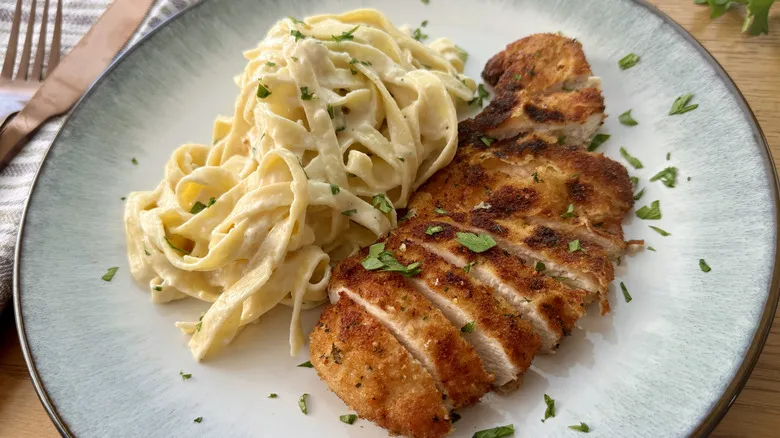
The charm of a fettuccine Alfredo recipe featuring chicken (like this one) lies in its ability to serve as a complete meal on its own. You have hearty pasta, a solid protein source from the chicken, and an overall satisfying dish that will keep you content (at least until dessert rolls around). However, you might be tempted to complement your substantial pasta dish with lighter sides or appetizers, preferably those that are greener in nature.
"I would suggest pairing this fettuccine Alfredo with chicken alongside light vegetable sides to enhance the meal," Rosenhouse advises. "Options like a mixed green salad, grilled asparagus, roasted broccolini, or green beans would all work well." Roasted vegetables would be an excellent addition to the chicken and pasta, creating a well-rounded plate that offers a bit of everything. Alternatively, you could follow Rosenhouse's suggestion and start your meal with a refreshing salad, or serve it on the side while enjoying the entrée (just be sure to keep it off the plate to prevent the salad dressing from mingling with the chicken or pasta).
If you prefer to enjoy your chicken Alfredo as is, without any additional sides, a nice glass of wine might be the perfect complement. A dry white wine pairs beautifully with creamy pastas and white meats like chicken, so you can't go wrong with a bottle of pinot grigio, chardonnay, or sauvignon blanc.
Recommended
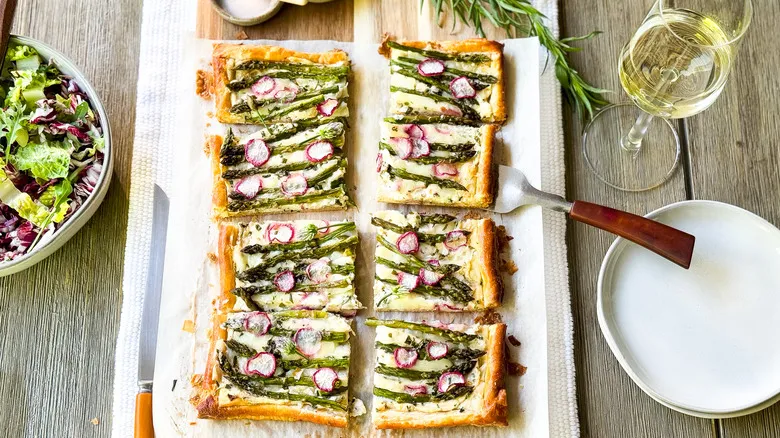
Springy Asparagus And Lemon Ricotta Tart Recipe

Valentine's Day Gruyère And Crab Gougerès Recipe

Curried Deviled Eggs With Pickled Carrots Recipe
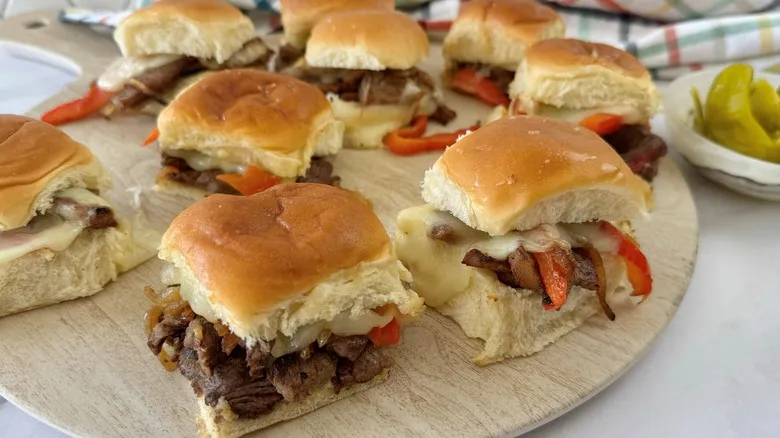
Philly Cheesesteak-Style Sliders Recipe
Next up

